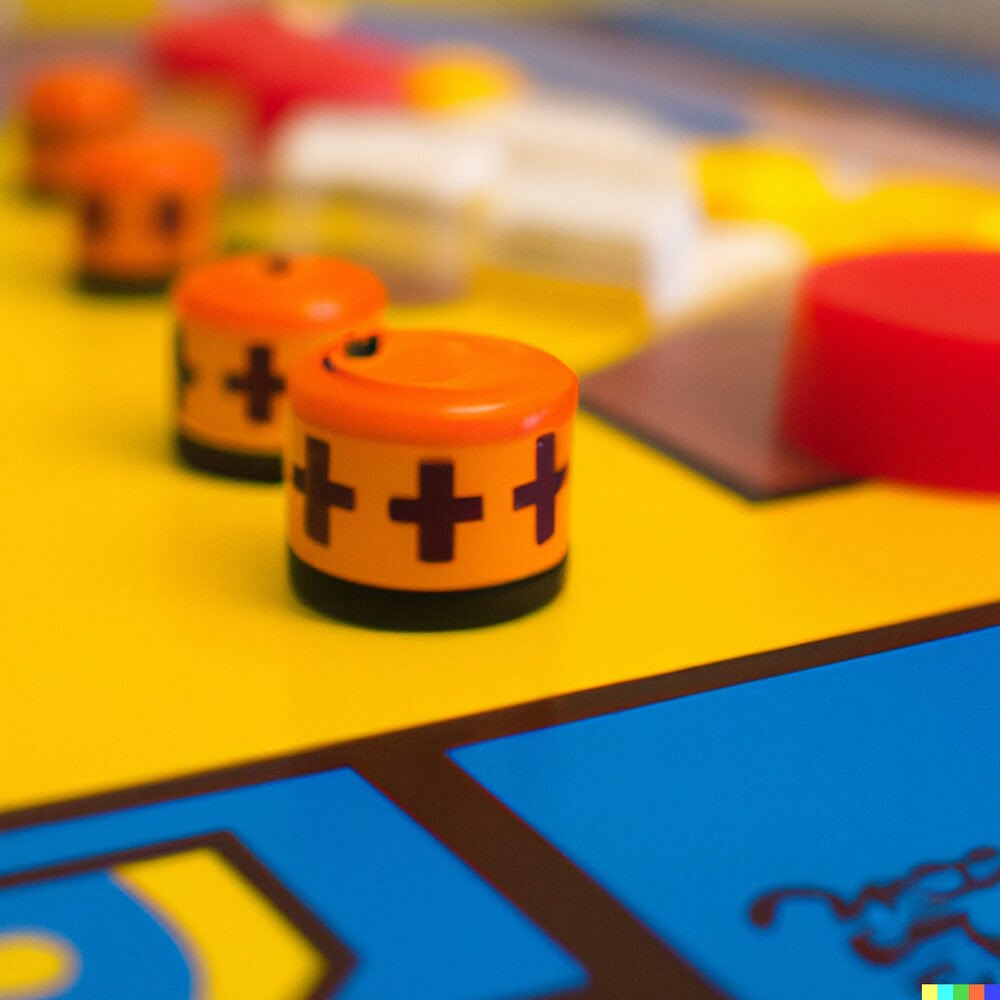Chess is a two player strategy board game that has been enjoyed for centuries by people around the world. It involves intense mental skill, strategic thinking, and planning ahead to outmaneuver your opponent on the 64-square chessboard. In this introduction, we will delve into the basics of chess, from its history to the rules and strategies that make it such a challenging and rewarding game.
Dating back to ancient origins, chess has evolved over time to become a beloved pastime for players of all ages and backgrounds. Understanding the history of chess can provide valuable insights into how the game has developed and why it continues to be so popular today. From its origins in India to its modern iterations in competitive tournaments, chess has endured as a timeless classic.
The 64-square chessboard is not just a simple grid – it is a battlefield where intricate tactics are employed using different pieces with unique abilities. Learning about the layout of the board and the movement capabilities of each piece is essential for mastering the game of chess. With this foundation in place, players can then move on to explore more advanced strategies and techniques for success on the chessboard.
History of Chess
Chess, being a two-player strategy board game, has a rich and fascinating history that dates back centuries. The origins of chess are believed to have started in India during the Gupta Empire around the 6th century AD. Initially known as “chaturanga,” which means “four divisions of the military” in Sanskrit, the game represented different elements of a traditional Indian army, including infantry, cavalry, elephants, and chariots.
Spread of Chess to Persia and Europe
During the medieval period, chess spread to Persia where it evolved into the form recognized today. From Persia, chess made its way to the Arab world and eventually reached Europe through various trade routes. By the 15th century, chess had become a popular pastime among European nobility and was often played in royal courts.
Modern Popularity of Chess
In modern times, chess has gained even more popularity with numerous international tournaments held each year, drawing players from all around the world. The world chess championship is one of the most prestigious titles that top players aspire to achieve.
Additionally, advancements in technology have made it easier for people to play chess online against opponents from different countries, further fueling its global appeal. The timeless nature of chess as a strategic game continues to captivate players of all ages and backgrounds.
The Chessboard
Understanding the layout of the chessboard is essential for mastering the game. The board is set up so that each player has a light-colored square on their far right-hand side. From this positioning, players can easily identify and coordinate their pieces during gameplay. The arrangement of pawns in front of more powerful pieces like knights, bishops, rooks, and the queen provides a protective barrier while also allowing for strategic movement and capture.
As players navigate their pieces across the board, they must navigate between two main goals: checkmating their opponent’s king or successfully executing a draw through stalemate or insufficient material on both sides. The unique dynamics of the chessboard foster an intricate interplay between offense and defense, requiring players to think several moves ahead and anticipate their opponent’s strategies to emerge victorious in this classic two-player strategy board game.
| Chessboard Facts | Details |
|---|---|
| Number of Squares | 64 squares in total |
| Piece Composition | Each player starts with 16 pieces |
| Main Goals | To achieve checkmate or force a draw through other means |
Rules of Chess
Chess is a two player strategy board game that has been around for centuries, providing players with a mental challenge and endless opportunities for skill development. Understanding the rules of chess is essential in order to play the game effectively and emerge victorious. The game is played on a checkered board with 64 squares, alternating between light and dark colors, creating a battlefield where each player maneuvers their pieces strategically to outsmart their opponent.
The objective of chess is simple yet complex: to checkmate your opponent’s king while protecting your own. This means putting the opponent’s king in a position where it cannot escape capture, securing victory. Each player controls an army of 16 pieces at the start of the game, including pawns, rooks, knights, bishops, queens, and kings. Knowing how each piece moves and captures is crucial in planning your moves and executing tactics to gain control of the board.
In addition to knowing how each piece moves, players must also adhere to specific rules during gameplay. For example, players must take turns moving their pieces – one move per turn – and cannot skip or play out of turn.
There are also special moves such as castling and pawn promotion that players can utilize to their advantage. By understanding the rules of chess and practicing different strategies, players can improve their skills and become more competitive in this classic game of strategy and foresight.
Strategies in Chess
Chess is a two-player strategy board game that involves intricate planning, tactical maneuvers, and foresight. In chess, players must carefully consider their opening moves, tactical strategies, and endgame techniques to outmaneuver their opponent and ultimately claim victory on the 64-square chessboard. Developing a strong understanding of different strategies in chess is essential for success in this intellectually challenging game.
To begin a game of chess, players often employ various opening moves to establish control over the center of the board, develop their pieces efficiently, and potentially launch an attack on the opponent’s position. Some popular opening strategies include the Ruy López, Sicilian Defense, and Queen’s Gambit. Each opening has its own set of objectives and potential outcomes, requiring players to adapt their strategy based on their opponent’s responses.
As the game progresses into the middle game phase, players must focus on executing tactical maneuvers to create threats, capture enemy pieces, or secure advantageous positions. Tactics such as pins, forks, skewers, and discovered attacks can turn the tide of the game in a player’s favor if executed correctly. Mastering these tactical concepts is crucial for gaining a strategic advantage over one’s opponent and setting the stage for a successful endgame strategy.
Famous Chess Players
Chess has a rich history filled with iconic names that have shaped the game and left a lasting legacy. From legendary grandmasters to world champions, these players have showcased their exceptional skills and strategic thinking on the chessboard. Let’s take a closer look at some of the most famous chess players who have made significant contributions to the world of chess.
Here are profiles of some renowned chess players who have left an indelible mark on the game:
- Garry Kasparov: Known for his aggressive playing style and tactical brilliance, Garry Kasparov is considered one of the greatest chess players in history. He became the youngest ever World Chess Champion in 1985 at the age of 22.
- Bobby Fischer: An American prodigy who became a legend in the world of chess, Bobby Fischer’s victory over Boris Spassky in the 1972 World Chess Championship match is still one of the most famous moments in chess history.
- Judith Polgar: Breaking barriers in a male-dominated sport, Judith Polgar is widely regarded as the strongest female player in chess history. Her remarkable achievements and aggressive playing style have inspired many aspiring chess players around the globe.
These are just a few examples of famous chess players who have captivated audiences with their mastery of the game. Whether through groundbreaking strategies, remarkable victories, or sheer dedication to improvement, these grandmasters and champions have set a high standard for excellence in the world of chess.
Benefits of Playing Chess
Chess is a two player strategy board game that has been recognized for its numerous benefits beyond mere entertainment. One of the primary advantages of playing chess is the mental exercise it provides. The game requires players to think several moves ahead, anticipate their opponent’s strategies, and adapt to changing circumstances on the board. This constant mental stimulation can improve cognitive functions such as memory, concentration, and problem-solving skills.
In addition to offering a mental workout, chess also enhances critical thinking abilities. Players must analyze different positions on the board, evaluate the potential consequences of their moves, and make decisions based on logical reasoning.
This process of strategic thinking can be applied not only to the game itself but also to real-life situations where critical decision-making is required. By honing their critical thinking skills through chess, players develop a valuable ability that can benefit them in various aspects of their lives.
Furthermore, playing chess fosters problem-solving skills as individuals navigate complex scenarios presented by the game. Each move in chess involves identifying challenges, assessing available options, and devising effective solutions to achieve a favorable outcome.
By engaging in this iterative process of problem-solving during gameplay, players develop resilience, creativity, and analytical capabilities that are crucial for addressing challenges in both personal and professional settings. Thus, it is clear that the benefits of playing chess extend far beyond the board into everyday life.
| Benefits of Playing Chess: Mental Exercise | Chess Enhances Cognitive Functions Such as Memory and Concentration |
|---|---|
| Critical Thinking Skills | Strategic thinking in chess can be applied to real-life decision-making |
| Problem Solving Abilities | Players develop resilience and analytical capabilities through chess gameplay |
Chess in Popular Culture
Chess has not only been a popular game for centuries but has also made its mark in popular culture through various movies, books, and events. The timeless appeal of chess as a two-player strategy board game has inspired filmmakers and authors to incorporate it into their work, showcasing the intellectual depth and intrigue that the game embodies.
Chess in Movies
Over the years, chess has been prominently featured in movies as a symbol of intelligence, cunning, and psychological warfare. Films like “Searching for Bobby Fischer” and “Queen of Katwe” have brought the world of chess to mainstream audiences, shedding light on the strategic complexities of the game. These movies often highlight the emotional highs and lows that come with competitive play, capturing the essence of what makes chess such a captivating pastime.
Chess in Books
In the world of literature, chess has served as both a plot device and a metaphor for broader themes. Classics like “The Queen’s Gambit” by Walter Tevis or “The Luzhin Defense” by Vladimir Nabokov explore the inner workings of passionate chess players and their struggles both on and off the board. These books delve into the psychological aspects of the game, painting a rich tapestry of characters whose lives are intertwined with chess.
Chess Events
From international tournaments to local competitions, chess events bring together players from diverse backgrounds to test their skills on the board. Events like the World Chess Championship or the Olympiad showcase top players competing at the highest levels, attracting fans and enthusiasts from around the globe. These events not only celebrate excellence in chess but also foster a sense of community among players who share a common love for this timeless game.
Resources for Improving Your Chess Skills
In conclusion, chess is more than just a game – it is a challenging mental exercise that has been enjoyed for centuries. With its deep history, intricate strategies, and endless possibilities for improvement, chess offers players a unique opportunity to enhance their critical thinking and problem-solving skills. By delving into the vast array of resources available, from books and websites to online tournaments, enthusiasts can continue to develop their understanding of the game and sharpen their gameplay.
Whether you are a beginner looking to grasp the basics or an experienced player aiming for mastery, there are resources tailored to every skill level. Books written by grandmasters offer valuable insights into advanced techniques, while online platforms provide opportunities for friendly matches and competitive play. Additionally, joining online tournaments allows players to test their skills against opponents from around the world, further honing their strategic prowess.
Overall, the world of chess is rich with opportunities for learning and growth. By immersing oneself in the strategies and tactics of the game, players can not only improve their chess skills but also reap the benefits of enhanced cognitive abilities. So why not take up the challenge today? Dive into the wealth of resources available and embark on a journey towards becoming a formidable chess player. Remember: practice makes perfect, so keep playing and keep learning.
Frequently Asked Questions
Is Chess a Board Game for Two People?
Chess is indeed a board game designed for two players. It is played on a square board divided into 64 squares of alternating colors. Each player has sixteen pieces, including a king, queen, bishops, knights, rooks, and pawns.
Is Chess a Strategy Board Game?
Chess is widely regarded as a strategy board game due to its complexity and the need for strategic thinking. Players must plan their moves carefully while anticipating their opponent’s next steps. The game involves tactics, positional play, sacrifices, and long-term planning.
What Is a Two-Player Strategy Game Played in a 64 Square Board?
Another two-player strategy game that is played on a 64 square board is checkers (also known as draughts). Checkers involves capturing an opponent’s pieces by jumping over them and ultimately trying to eliminate all of the opponent’s pieces from the board. The game requires skillful maneuvering and calculation to outsmart the other player.

I love playing all kinds of games – from classics like Monopoly to modern favourites like Ticket to Ride.
I created this blog as a way to share my love of board games with others, and provide information on the latest releases and news in the industry.





